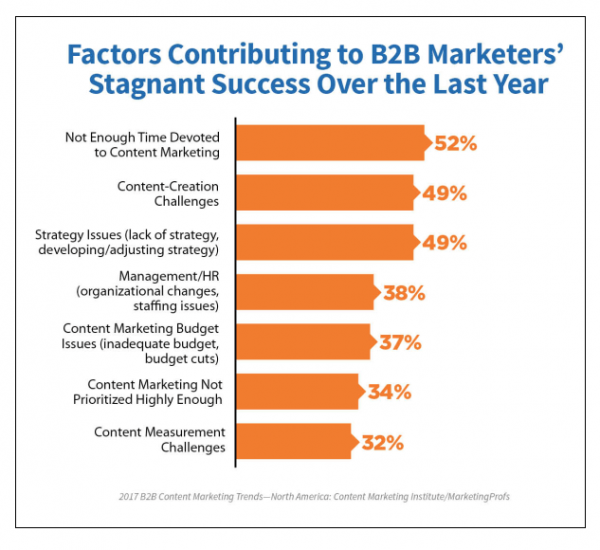Dive into the secret world of content audits and discover how they can supercharge your content marketing strategy success.

Image courtesy of via DALL-E 3
Table of Contents
- Introduction: What Is a Content Audit?
- Getting Ready for a Content Audit
- Collecting Your Content Data
- Analyzing Your Content
- Evaluating Content Quality
- Identifying Gaps and Opportunities
- Updating and Reusing Content
- Making an Action Plan
- Conclusion: The Benefits of Regular Content Audits
- Frequently Asked Questions (FAQs)
Introduction: What Is a Content Audit?
Imagine you have a favorite book that you love to read over and over again. Now, think about the internet as a giant library filled with all sorts of content like books, articles, videos, and pictures. Just like you enjoy checking out your favorite book to make sure it’s still great, businesses and individuals need to do the same with their online content. This process is called a content audit.
What is Content?
When we talk about “content,” we mean all the stuff you can find online. It’s like the words in a blog post, the scenes in a video, or the pictures on a website. Everything that you see and interact with on the internet is content!
Why Do We Audit Content?
Now, why should we bother checking and reviewing all this online content regularly? Well, just like how you might outgrow a storybook or find a mistake in it, businesses and individuals need to make sure their online content is still doing a good job. By auditing content, they can see what’s working well, what needs fixing, and what new stories they should tell to keep their readers happy!
Getting Ready for a Content Audit
Before diving into a content audit, there are a few essential steps you need to take to prepare yourself. Proper preparation will ensure that your audit goes smoothly and you get the most out of it. Let’s explore what you need to do to get ready for a content audit.
Organizing Your Tools
One of the first things you need to do is gather the right tools for your content audit. Tools like spreadsheets, analytics software, and content management systems will be your best friends during this process. Spreadsheets can help you keep track of all your content in an organized manner, while analytics software can provide valuable insights into how your content is performing. Content management systems can streamline the audit process by centralizing all your content in one place.
Setting Clear Goals
Before starting your content audit, it’s crucial to set clear goals for what you want to achieve. Do you want to improve the overall quality of your content? Are you looking to boost engagement with your audience? By defining your objectives, you can focus your audit on areas that will bring the most value to your content marketing strategy. Having clear goals will also help you stay on track throughout the audit process.
Collecting Your Content Data
Before you can start evaluating your content, you need to gather all of it in one place. This means making a list of everything you have online, from blog posts to videos and images. By having a comprehensive inventory, you can see the full scope of your content and identify any gaps or duplication.
Image courtesy of www.pixelmattic.com via Google Images
Using Tools for Data Collection
To make the data collection process easier, you can use tools that automate the gathering of information about your content. Tools like Google Analytics, SEMrush, or even content management systems like WordPress can provide valuable data on how your content is performing. These tools can help you track metrics such as page views, time on page, and engagement with your content.
Analyzing Your Content
Once you have gathered all your content data, it’s time to dive into analyzing it. This step is crucial in understanding how your content is performing and what changes or improvements can be made to enhance its effectiveness.
Checking Performance
Performance metrics are like the report card for your content. They show you how well your content is doing online. Metrics such as views, likes, shares, and comments can give you a clear picture of what resonates with your audience and what may need some adjustments.
Identifying High and Low Performers
Not all content is created equal. Some pieces may be hitting it out of the park with high engagement and views, while others may be falling flat. By identifying your high-performing content, you can learn what works best for your audience and replicate that success. On the other hand, understanding your low-performing content can help you pinpoint areas for improvement or topics to avoid in the future.
Evaluating Content Quality
When conducting a content audit for your content marketing strategy, it’s crucial to evaluate the quality of your existing content. Quality check helps ensure that your content remains relevant and accurate for your audience. Let’s explore how to assess the quality of your content effectively.

Image courtesy of fivechannels.com via Google Images
Relevance to Audience
One key aspect of evaluating content quality is determining whether your content is still relevant to your target audience. Think about what your audience is interested in and whether your content addresses their needs and concerns. You can look at metrics such as engagement rates and feedback to gauge the relevancy of your content. Make sure that your content is engaging and valuable to your audience to maintain their interest.
Checking for Accuracy
Accuracy is another essential factor in evaluating content quality. It’s important to ensure that the information presented in your content is correct and up-to-date. Inaccurate information can damage your credibility and trust with your audience. Take the time to fact-check your content and verify the data and sources you use. Regularly updating your content with accurate information will help you maintain a high level of quality and trustworthiness.
Identifying Gaps and Opportunities
When looking to improve your content strategy, it’s essential to identify topics that are currently missing from your content inventory. This involves examining the themes and subjects covered in your existing content and determining where there are gaps. Perhaps there are new trends in your industry that you haven’t addressed or common questions from your audience that remain unanswered. By spotting these missing topics, you can start brainstorming ideas for new content that will fill these gaps and provide valuable information to your readers.
Creating New Content Ideas
Brainstorming new content ideas is a key part of enhancing your content marketing strategy. Once you have identified the missing topics in your content, it’s time to get creative and come up with engaging new ideas. These ideas should not only address the gaps in your current content but also align with your overall content marketing goals. Consider different formats such as blog posts, videos, infographics, or podcasts to diversify your content and cater to various audience preferences. By consistently brainstorming and creating new content, you can keep your audience engaged and attract new followers to your brand.
Updating and Reusing Content
When you have a lot of content on your website or social media platform, it’s essential to keep it fresh and engaging. One way to do this is by updating and reusing your existing content. This not only saves time but also allows you to reach a new audience or provide updated information to your current followers.

Image courtesy of contentmarketinginstitute.com via Google Images
Refreshing Old Content
Refreshing old content involves going through your existing blog posts, videos, or images and updating them with new information. For example, if you wrote a blog post about the top trends in fashion last year, you can revisit the post, add new trends for this year, and republish it. This shows your audience that you’re keeping up with the latest information and provides value to them.
Repurposing Content
Repurposing content means taking one piece of content and presenting it in a different format. For instance, if you have a blog post that performed well, you can turn it into a video or an infographic. This allows you to cater to different audiences who may prefer consuming content in various formats. Additionally, repurposing content can help improve your SEO rankings by providing more diverse content to search engines.
Making an Action Plan
After analyzing your content and identifying areas for improvement, it’s essential to create an action plan to implement the findings from the content audit. This plan will help you prioritize tasks and ensure that improvements are made efficiently. Here’s how you can go about making an action plan:
Setting Priorities
When deciding what to fix or update first, consider the impact each change will have on your content performance. Focus on addressing high-priority items that will make the most significant difference. This could be updating outdated information, optimizing keywords, or enhancing the user experience.
Assigning Tasks
Assigning specific tasks to team members ensures that everyone knows their responsibilities and deadlines. Divide the work based on each team member’s expertise and availability. For example, assign the task of updating blog content to the writer, optimizing SEO to the SEO specialist, and improving visuals to the graphic designer.
Conclusion: The Benefits of Regular Content Audits
Regular content audits offer a way to ensure that your online material stays up-to-date and in tune with your audience’s interests. By consistently refreshing and refining your content, you can keep your readers engaged and coming back for more. This approach helps build trust and credibility with your audience, showing that you prioritize providing them with valuable and relevant information. Additionally, staying current with your content keeps your website or platform looking active and vibrant, which can attract new visitors and retain existing ones.

Image courtesy of www.ironpaper.com via Google Images
Boosting Content Performance
Content audits play a crucial role in enhancing your overall content marketing strategy and performance. By analyzing key metrics such as views, likes, shares, and engagement levels, you can identify what content performs well and what needs improvement. This data-driven approach allows you to optimize your content for search engines, leading to better visibility and higher rankings. Improved SEO leads to increased organic traffic, reaching a wider audience and potentially generating more leads or sales. Ultimately, regular content audits contribute to boosting the effectiveness of your content marketing efforts and achieving your business goals.
Want to turn these SEO insights into real results? Seorocket is an all-in-one AI SEO solution that uses the power of AI to analyze your competition and craft high-ranking content.
Seorocket offers a suite of powerful tools, including a Keyword Researcher to find the most profitable keywords, an AI Writer to generate unique and Google-friendly content, and an Automatic Publisher to schedule and publish your content directly to your website. Plus, you’ll get real-time performance tracking so you can see exactly what’s working and make adjustments as needed.
Stop just reading about SEO – take action with Seorocket and skyrocket your search rankings today. Sign up for a free trial and see the difference Seorocket can make for your website!
Frequently Asked Questions (FAQs)
How Often Should I Do a Content Audit?
It is recommended to conduct a content audit regularly to keep your content strategy on track. The frequency of audits can vary depending on the size of your content library and how often you publish new content. For smaller businesses or individuals, an annual content audit might be sufficient. However, larger organizations with a high volume of content may benefit from more frequent audits, such as semi-annual or quarterly reviews.
What Tools Can Help with a Content Audit?
There are several tools and software available to assist you in conducting a content audit efficiently. Some popular tools include:
- Content Management Systems (CMS): Platforms like WordPress, Drupal, or HubSpot can help organize and manage your content.
- Google Analytics: This tool provides valuable insights into how your content is performing, allowing you to make data-driven decisions during the audit.
- SEMrush: A comprehensive SEO tool that can analyze your content’s performance and suggest improvements.
- Screaming Frog: Useful for crawling websites to gather data on URLs, metadata, and more for a thorough content audit.







